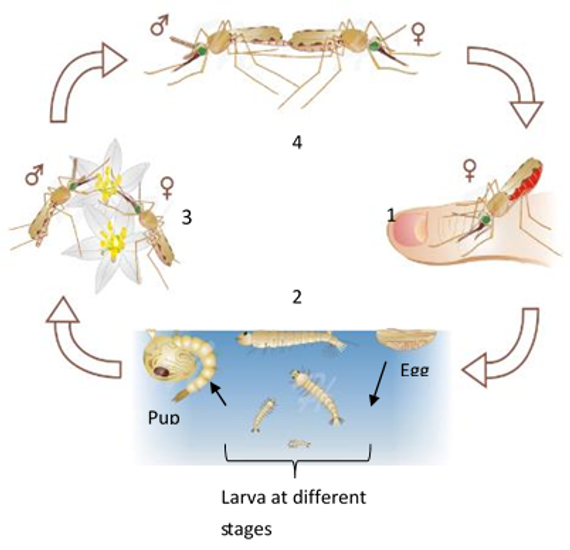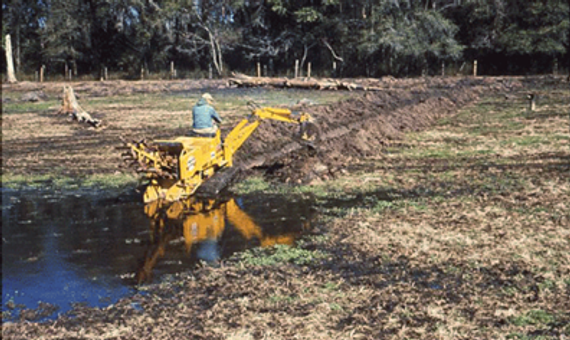Life cycle Anopheles mosquito
Mosquitoes lay eggs directly on water (Culex, Culiseta, Anopheles) or on moist substrates ( Aedes and Culiseta). In some species (Aedes), in the absence of impoundment, eggs can remain viable for several years (in quiescence). Each impoundment of the spawning area (larval location) generates the simultaneous appearance of a multitude of larvae whose aquatic development is variable according to the temperature conditions (from 5 to 90 days). Larvae live in the water.
At the end of 4 moults they turn into nymph before emerging in the adult state. After emergence, males (emerged first) and females mate. Then the females disperse in search of hosts while the males remain on the spot and survive only a few days. The dispersal of females in search of a blood meal necessary for the maturation of eggs can reach several tens of kilometers in a few days and lay eggs again on water, hence the cycle can restarted.
Mosquito behaviour facts:
- Only females bite and live on average 2 months and can make up to 5 eggs of 150 eggs with. One blood meal. Egg to adult takes 6-10 days
- Habitat – prefer clean and unpolluted water
- Biting rhythm – bite at night and rest indoor and outdoor (depends on species).
- Prefer darker colours.


